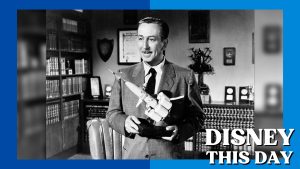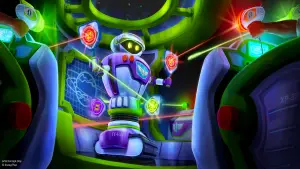Jeffrey Katzenberg is determined to show that 3D's time has arrived
Early in his days as a Hollywood climber, Jeffrey Katzenberg was known around town for his tenacious pursuit of hot movie scripts. Thirty years later, the hyperkinetic mogul no longer confines his obsessions to screenplays. If you happen to be sitting at the corner table of Beverly Hills' swanky Peninsula hotel, the DreamWorks Animation (DWA ) chief executive is likely to chew your ear off about 3D movies. Katzenberg is convinced they are about to become "the single most revolutionary change since color pictures."
Katzenberg's army of followers seems to grow almost daily. Steven Spielberg is on board and is preparing to work with Lord of the Rings director Peter Jackson to produce a 3D film. They join devotees like Titanic director James Cameron and a certain Yoda from San Francisco named George Lucas, who intends to trot out his six Star Wars flicks in 3D starting in 2009. "Jeffrey's Mr. Go Go," says Lucas. "The time has come for 3D to become more than some theme park attraction. We see a business there."
Amazingly, so do a growing number of theater owners. After years of resisting the rollout of expensive digital projectors, America's theater chains are hustling to install that state-of-the-art equipment, which can be upgraded to show 3D films. Digital projectors eliminate a lot of the herky-jerky movements that gave 3D filmgoers headaches, even nausea, in the past, says Michael L. Campbell, CEO of Regal Entertainment Group (RGC ), the nation's largest theater chain.
How did 3D lurch back into the picture? It really started in 2005, when Cameron and Lucas showed up at ShoWest, an annual meeting of theater owners, and pushed them to buy digital projectors to make their films look better. It took a while, but as projector costs came down and Hollywood studios warmed to the idea of helping defray the costs, theater owners started installing the new equipment at a per-screen cost of about $75,000.
Today, about 2,200 of the 38,000 theater screens in the U.S. are digital. Some directors and moguls pointed out that for $30,000 more per screen theaters could be adapted to show 3D films as well. That includes a special screen for the most popular 3D technology. Slightly more stylish glasses than the ones from the '60s are still needed to help a viewer's brain decipher the two images projected onto the screen.
Regal currently offers 3D on 109 of its nearly 6,400 screens. It hopes that as many as one third of those screens will have 3D capability when they all become digital in the next four years. By then, leading 3D equipment vendor RealD should have 4,000 screens installed industrywide, up from 650 now, says analyst Gordon Hodge of Thomas Weisel Partners.
Still, some question whether folks will flock to a medium that remains something of a gimmick. When Walt Disney Co. (DIS ) ran a 3D version of its Meet the Robinsonsmovie on 581 of the 3,413 screens that showed the film, it generated nearly three times as much business on the 3D screens. But how many people really want to sit in a theater for two hours wearing sunglasses? That's what did in 3D the first time around. "I don't hear anyone clamoring for this," says box office tracker Paul Dergarabedian, founder of the research firm Media by the Numbers. "Maybe if there are some great films that you just have to see in 3D."
That's where Katzenberg comes in. He figures that if he can convert enough tech-savvy directors like Lucas—"the alpha members of our herd," as Katzenberg describes them—to sign on to 3D, other studios will have to follow. "He makes his case with, shall we say, enthusiasm," says Sony Pictures Entertainment (SNE ) Chairman Michael Lynton, who got the corner-table treatment and is now looking for films to make in 3D.
Using a specially equipped screening room at his Glendale (Calif.) studio—where he shows a U2 concert in 3D and test versions of Shrek the Third—Katzenberg tries to win over theater owners and others. He has also hired top 3D gurus to make his own flicks. That includes Meet the Robinsons 3D supervisor Phil McNally, whose voicemail identifies him as "Captain 3D."
Katzenberg's pitch: 3D can spice up the industry's box office take, which is growing this year by only single digits despite blockbusters like Spider-Man 3 and Transformers. Theaters hope to charge as much as $5 more per ticket for 3D films. And the technology keeps viewers away from DVDs (3D films can't be seen on disc, yet) and thwarts piracy since 3D movies are harder to record.
Later this year, Paramount will release a 3D version of director Robert Zemeckis' big-budget fantasy film Beowulf in several theaters, including Imax, which already shows many films in 3D. Next year, New Line Cinema releases its remake of Journey to the Center of the Earth entirely in 3D. Disney, which until now had made a limited number of its animated films in 3D, signed Zemeckis to make future animated films for them purely in 3D. "Until now it was a chicken-and-egg thing," says Richard Cook, chairman of Walt Disney Studios. "There just weren't enough screens for us to make films just for 3D."
There's an element of self-interest in Katzenberg's campaign. The 3D technology is best suited for special-effects and animated films like those produced by his company. DreamWorks has said it plans to release only 3D movies to theaters, starting in 2009 with an animated horror movie, Monsters vs. Aliens, as well as the latest in its Shrekfranchise.
In the meantime, Katzenberg is tireless, even if some of his targets aren't. John Fithian, president of the National Association of Theatre Owners, says Katzenberg has scheduled three breakfasts in the past six months to press him to get his members to speed up their 3D efforts. "It's great when a studio executive is talking about something other than downloads for a change," notes Fithian. "But Jeffrey wants me to devote 24 hours a day to this, and I have other things to do."





